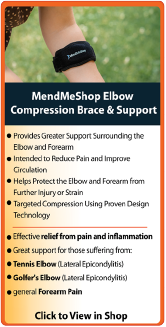|
| Posterior Cruciate Ligament (PCL) InjuryPCL Injury SymptomsIf you have injured your PCL you will usually experience pain in your knee that increases when you run, kneel, squat, slow down or use ramps and stairs. Tenderness and swelling usually set in within 3 hours of the injury with bruising to follow within 1-2 days. Your knee may be stable enough to walk but you may also notice a small degree of instability or it giving way during certain activities when you are not careful. PCL Injury Causes Tearing of the posterior cruciate ligament usually occurs during a sports related activity or an acute trauma of some kind. If the shinbone is hit hard just below the knee in situations such as a football or soccer player falling to the ground with the knee bent and it takes the force of the fall or your knees slamming into the dashboard in a car accident, PCL tears are often the result. Diagnosing PCL InjuriesTo diagnose a PCL tear and the extent of damage that has occured, your doctor may perform a variety of assessments:
PCL Injury Treatments
Like most sprains or tears to a ligament, immediate treatment of the PCL injury includes the application of cold compression, rest and elevation of the knee. It is also important to allow the injured knee to rest. Treatment differs from case to case depending on the degree of instability in the knee and the patients activity level. Treating an PCL injury with rest, cold, and Circulation Boost will speed healing and improve the function of the knee so you can return to your normal activities quickly. Once the PCL has improved and activities can be resumed, you will first want to build muscle strength around the knee under the guidance of a physical therapist. In cases of a complete rupture of the PCL, reconstruction/reattachment of the PCL will be required. Using these therapies prior to surgery will reduce further damage and improve the health of the surrounding tissue so the surgery will be less invasive. Generally, the more invasive the surgery, the more scar tissue is introduced into the area. Using the following therapies after surgery will control pain and swelling, reduce tissue damage, speed healing and treat the scar tissue resulting from the healing process. You will have a healthier knee with a greater range of motion than if your reconstructed PCL was left untreated. RestResting the injured knee (meaning don't use it at all!) helps prevent the injury from worsening. Not resting a soft tissue injury is dangerous, as this will increase the risk of re-injury and increased swelling - eventually this will become chronic. The quickest (and safest) way to repair damaged soft tissue at home is to rest and incorporate the use of TShellz Knee Wraps at least twice per day . Cold CompressionUsing cold compression immediately following an PCL tear reduces pain and swelling and reduces the tissue damage that occurs with soft tissue injuries like ligament tears. A Cold Compress or Ice Pack allows you to treat yourself in an effective and convenient way following an PCL tear, if re-injury occurs (which is common due to the instability of the knee), or following surgery if it is required. Cold works by interrupting and slowing nerve and tissue function in the damaged area. This is important because once blood vessels are damaged, they can no longer carry oxygenated blood to the damaged PCL so this tissue begins to break-down. Once the inflammation and swelling of an PCL tear has been alleviated, nourishing and strengthening the ligament tissue is recommended. Using Circulation Boost will speed your recovery and heal your ligament more completely preparing it for leg strengthening exercises. Talk to your doctor or physical therapist to find out which exercises are appropriate for your situation. Circulation Boost via Use of the Knee TShellz Wrap® After initial inflammation and swelling is gone you can begin to treat your PCL tear with Circulation Boost, or Circulatory Boost. Circulatory Boost, via use of the TShellz Wrap®, helps increase blood flow in soft tissue. Blood flow transports vital nutrients to injured tissue to promote your body's natural healing process. In addition, the fresh blood flow whisks away dead tissue and toxins that have built up from the injury leaving the area clean and able to heal faster. By treating yourself with Circulation Boost you can increase your body's blood supply to the knee and your body's natural healing power. In addition, the fresh blood flow whisks away dead tissue and toxins that have built up from the injury leaving the area clean and able to heal faster. Our Knee TShellz Wrap® provides effective, non-invasive, non-addictive pain relief and enhanced blood flow with no side effects. Continue the healing process by resting your injury. Limit your movements that may aggravate your strain and lead to reinjury. Tendon / Muscle related injuries can easily turn from a grade 1 strain into a grade 2 or a grade 2 into a grade 3 injury. During your recovery, you will probably have to modify and/or eliminate any activities that cause pain or discomfort in your knee until your pain and inflammation settle. Taking the time to care for your knee properly will have your knee back to normal faster and allow you to get back to the activities you enjoy. The more diligent you are with your treatment and rehabilitation, the faster you will see successful results! Through use of controlling inflammation with cold and treating the injured area with a Knee TShellz Wrap®, you will notice incredible improvement in your knee. Surgery and RecoveryIf an injured ligament does not strengthen appropriately or an athlete continues to experience the knee giving way, arthroscopic surgery and ligament reconstruction may be necessary. If PCL reconstructive surgery is necessary, remember that proper post-surgery rehabilitation is very important, perhaps even more important than the surgery itself. Activities should set out to promote healing, increase flexibility in the knee and strengthen surrounding muscles. Your physical therapist will probably set up a "passive range of motion" program, and put you in a hinged knee brace for a month or two to prevent hyper-extension or hyper-flexion in the knee. An important point for PCL patients to remember after surgery is that every effort must be made to increase range of motion and flexibility at the knee. Weakness in the knee can usually be eliminated by extra strengthening exercises, but increased stiffness can sometimes be permanent if not corrected by further surgery. Not only will the Knee TShellz Wrap® help reduce the pain and inflammation in your knee, but will help increase the range of motion in your joint, reduce post operative scar tissue and increase flexibility in the surrounding muscles, tendons and ligaments. Ask your physical therapist about these treatments and if it's right for your reconstructed PCL! As with all medical devices, make sure your physician is aware of any treatment plan you decide to take. Post Surgery Scar TissueThe growth of scar tissue and adhesions are a big problem when recovering from most knee surgeries. Scar tissue/adhesions are what cause stiffening in the tendons and muscle, entrapping nerves, restricting movements, and reducing blood flow. Unfortunately, scar tissue does not "just go away". Depending on your activity level, age, and therapy done during your rehabilitation, it may never go away. Scar tissue is a major problem as it will permanently reduce flexibility and vastly increase your risk of re-injury. When dealing with scar tissue it is always important to:
 PreventionTo prevent knee injuries it is recommended that you gradually increase the intensity of any exercise or activity when you begin and to be aware of the movement of the knee during activity. No one is immune to an MCL Injury but Using |
        |














